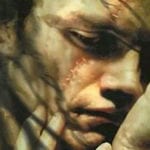 Weird Stuff
Weird Stuff  Weird Stuff
Weird Stuff  Our World
Our World 10 Archaeological Discoveries of 2025 That Refined History
 Weird Stuff
Weird Stuff 10 Fascinating Facts You Might Not Know About Snow
 Miscellaneous
Miscellaneous Top 10 Things Crypto Was Supposed to Change & What Actually Did
 History
History 10 Huge Historical Events That Happened on Christmas Eve
 Music
Music 10 Surprising Origin Stories of Your Favorite Holiday Songs
 History
History 10 Less Than Jolly Events That Occurred on December 25
 Weird Stuff
Weird Stuff 10 Funny Ways That Researchers Overthink Christmas
 Politics
Politics 10 Political Scandals That Sent Crowds Into the Streets
 Weird Stuff
Weird Stuff Ten Bizarre Facts About The Doge Meme
 Weird Stuff
Weird Stuff 10 Weird Things People Used to Do at New Year’s
 Our World
Our World 10 Archaeological Discoveries of 2025 That Refined History
 Weird Stuff
Weird Stuff 10 Fascinating Facts You Might Not Know About Snow
Who's Behind Listverse?

Jamie Frater
Head Editor
Jamie founded Listverse due to an insatiable desire to share fascinating, obscure, and bizarre facts. He has been a guest speaker on numerous national radio and television stations and is a five time published author.
More About Us Miscellaneous
Miscellaneous Top 10 Things Crypto Was Supposed to Change & What Actually Did
 History
History 10 Huge Historical Events That Happened on Christmas Eve
 Music
Music 10 Surprising Origin Stories of Your Favorite Holiday Songs
 History
History 10 Less Than Jolly Events That Occurred on December 25
 Weird Stuff
Weird Stuff 10 Funny Ways That Researchers Overthink Christmas
 Politics
Politics 10 Political Scandals That Sent Crowds Into the Streets
 Weird Stuff
Weird Stuff Ten Bizarre Facts About The Doge Meme
10 Literary Masterpieces So Bad They’re Actually Pretty Good
There are good books, and there are bad books. Then there are books that are so sublimely awful, so hilariously inept, that you can’t stop reading, no matter how hard you’re laughing. Called “so bad it’s good” (aka “sobig”), this microgenre consists of books that are terrible and enjoyable at the same time.
Most of these books were traditionally published, although a few were self-published or released on the Internet. All of them have a well-earned reputation for being masterpieces of failure. These books have provided many laughs to many people, even decades after their publication and long after better works have faded into obscurity.
10 The Eye Of Argon
Jim Theis

The Eye of Argon, one of the most famous sobig books, is regularly read at science fiction conventions. There, a circle of readers tries to get through as much of the story as possible without laughing. The book is chock-full of nonsensical purple prose that makes you laugh out loud, including this description of an alluring woman:
Eyeing a slender female crouched alone at a nearby bench, Grignr advanced, wishing to wholesomely occupy his time. The flickering torches cast weird shafts of luminescence dancing over the half-naked harlot of his choice, her stringy, orchid twines of hair swaying gracefully over the lithe opaque nose, as she raised a half-drained mug to her pale red lips.
The Eye of Argon was originally published in a science fiction journal in 1970. The story soon gained notoriety as a particularly egregious example of science fiction writing, which led to group readings at science fiction conventions. Even 45 years later, the story is still well-known.
Little is known about author Jim Theis, who was just 16 years old when he wrote the story. Before his death, he gave only a couple of interviews about the novella. One was in a later issue of the same science fiction journal which had published The Eye of Argon. The other, unconfirmed interview was with a science fiction radio show called Hour 25. Hurt by the criticism, Theis never published anything else.
Despite its reputation, The Eye of Argon is the rare science fiction story that is still widely read, even 45 years after publication in an obscure fan journal in the Ozarks. Surely, that’s some kind of accomplishment.
9 Helen Huddleson
Amanda McKittrick Ros
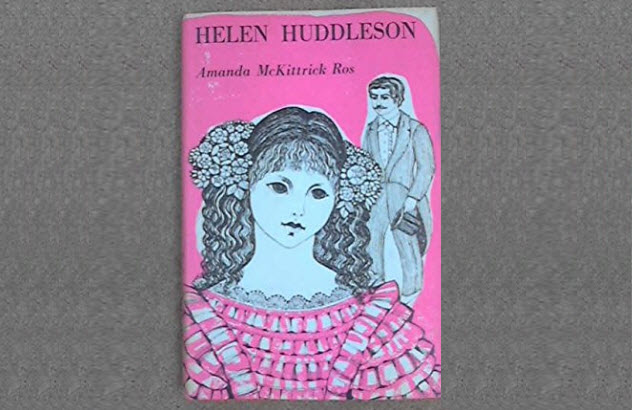
Amanda McKittrick Ros, the author of Helen Huddleson, has been described as “uniquely dreadful” and “the greatest bad writer who ever lived.” Her “fans” include Mark Twain, C.S. Lewis, Aldous Huxley, and Nick Page. The Inklings, an Oxford literary group, used to hold competitions to see who could read her work the longest without laughing, much like The Eye of Argon readings described above.
But what makes Ros’s work so uniquely awful?
It could be the melodramatic, so-purple-it’s-glowing prose with descriptions of eyes as “globes of glare” or pants as “the southern necessary.” Then again, it could be her ability to find new and inventive ways to be bad with every line and to use every word in the thesaurus to describe something in the most convoluted way possible.
For example, here is a paragraph from Helen Huddleson, McKittrick’s last novel, which describes the villain’s evil accomplices:
She had a swell staff of sweet-faced helpers swathed in stratagem, whose members and garments glowed with the lust of the loose, sparkled with the tears of the tortured, shone with the sunlight of bribery, dangled with the diamonds of distrust, slashed with sapphires of scandal and rubies wrested from the dainty persons of the pure.
The characters in Helen Huddleson are mostly named after fruits. There is no Professor Plum, although there is a Sir Peter Plum, a Lord Raspberry, the evil Madame Pear, servant girl Lily Lentil, and the Earl of Grape.
Unfinished at her death, the book was discovered and posthumously published by Jack Loudan. If possible, it is even more confused than her previous books, with characters coming and going without explanation and with a plot that seems to go everywhere and nowhere at once.
8 The Gallery Of Pigeons And Other Poems
Theophilus Marzials
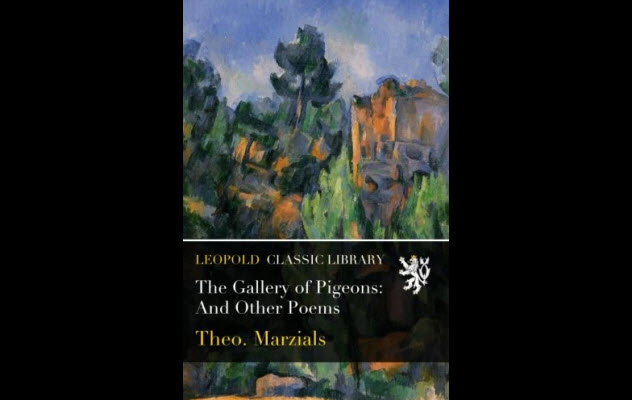
Theophilus Marzials is famous for writing “the worst poem in the English language.” The poem, aptly called “A Tragedy,” begins with:
Death!
Plop.
The barges down in the river flop.
Flop, plop
Above, beneath.
From the slimy branches the grey drips drop,
As they scraggle black on the thin grey sky,
Where the black cloud rack-hackles drizzle and fly
To the oozy waters, that lounge and flop
On the black scrag piles, where the loose cords plop,
As the raw wind whines in the thin tree-top.
Plop, plop.
Despite this poem, Marzials counted Edmund Gosse and Ford Madox Ford among his admirers. Ford called Marzials “the handsomest, the wittiest, the most brilliant, and the most charming of poets.”
Marzials only published one book of poetry, The Gallery of Pigeons. Most of the poems are not quite as bad as “A Tragedy.” But there are some strange lines that haven’t aged well, like this excerpt from “An Arabesque”:
Half-asleep I look—believe me!
I’ve an eye alive for barter!
On her mouth a luscious fruit-stall
I but clink one coin of kissing,
To get back a feast of peaches,
Ripe rich fruit—Ay! ripe to bursting
To be bitten, till the kernels.
Snowy white and streak’d with crimson,
Ice and thrill me back again.
Marzials went on to write popular songs. One of his most famous songs, “The Twickenham Ferry,” was still being performed onstage and on-screen as late as 1933. However, he is still best known as the author of the “worst poem ever written.” The “Flop, plop” of “A Tragedy” haunts his legacy to this day.
7 English As She Is Spoke
Pedro Carolino
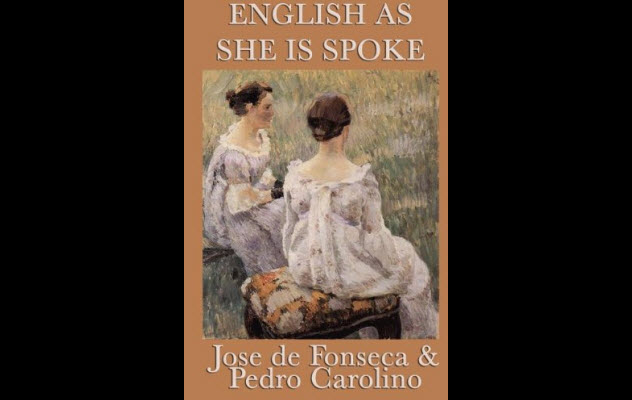
Intended as an English-Portuguese phrase book, English As She Is Spoke features many literal translations from Portuguese to English. Its author, Pedro Carolino, was not quite fluent in English. So he relied on Portuguese-French and French-English dictionaries to literally translate idioms and popular expressions, turning his own phrase book into a game of trilingual telephone.
The result is a garbled dictionary in which the English makes little sense. It is full of strange names and phrases, including birds such as the “Whoop,” the “Pea Cock,” and “Yeung turkey.” “On the church” items contain “the sides of the nef,” “the little cellar,” and “the holywater pot.” Then there are the familiar phrases such as “Wax my shoes,” “Nothing some money, nothing of Swiss,” and “These apricots and those peaches make me and to come water in mouth.”
This book prefigures the awkward and sometimes hilarious mistranslations of programs like Babelfish, where a phrase like “It’s a nice day” becomes “This is a day when the weather is good” when translated from English to Japanese to English again. When English As She Is Spoke was published, Babelfish was nothing but a fantasy, and Carolino’s inept translations were unprecedented and hilarious.
Anyone who’s tried to learn a second language will recognize the pain of trying to express a thought in a new language. Who hasn’t said something like “The walls have hearsay” in the language they were trying to learn? Carolino’s dogged determination to create an English phrase book, using two bilingual dictionaries and zero knowledge of English, is a triumph of enthusiasm over linguistics.
6 Maradonia And The Seven Bridges
Gloria Tesch
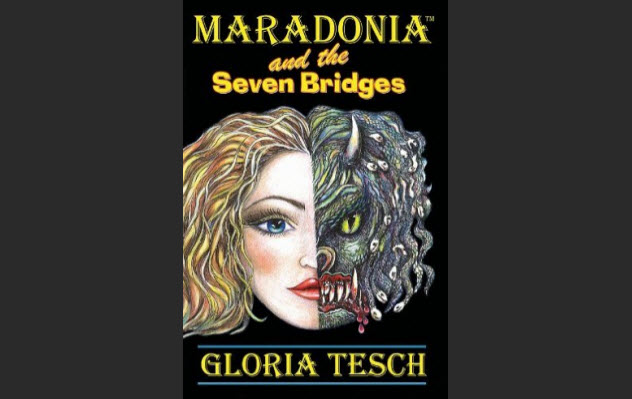
What The Eye of Argon is to science fiction, The Maradonia Saga is to fantasy. With terrible spelling and grammar and a cliche-ridden, nonsensical plot, the Maradonia Saga includes many cringeworthy passages. Here is a sampling:
The Professor collapsed on his white linen bed as he thought about the content of an ancient book he was studying during the last couple of days and nights.
Electric shockwaves, ponderous thunder and blinding lightning’s inflated the hall as the ruler of the Underworld, King Apollyon, suddenly disappeared with the sound of an explosion, but his boisterous voice still echoed through the cloister halls, “Go . . . for the kill!”
“Move! You are not the only people here. There are others too,” Alana smirked passing by.
The first volume was published when author Gloria Tesch was just 13 years old. What could have been a juvenile project became a so-bad-its-good sensation, much like Rebecca Black’s “Friday” song.
This series has earned a cult reputation for being awful in nearly every conceivable way—from cover art to grammar to the almost nonexistent plot. Tesch has also come under fire for her shady promotional tactics, which may have included placing her books on a “Bestsellers” bookshelf in a bookstore and then taking a picture next to them.
5 Latawnya, The Naughty Horse, Learns to Say ‘No’ to Drugs
Sylvia Scott Gibson
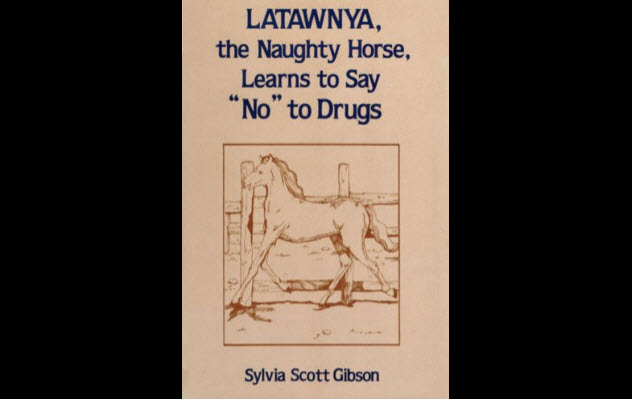
This cautionary tale features anthropomorphic horses smoking, drinking, and doing drugs in a field. Latawnya, a naughty horse, disobeys her parents and starts doing drugs with the other horses. Eventually, she learns to say “neigh” to drugs.
This book also includes a memorable poem about the dangers of drugs:
Using drugs will kill. So be for real.
Using drugs is not a good idea.
You can call me names and you can talk
about me too. I don’t use drugs and
neither should you.
The book was first published in 1991 but wasn’t rediscovered until the mid-2000s. The rediscovery has led to dramatic readings of the text. The book has also become a collector’s item, with copies selling for as much as $400 apiece.
Encouraged by the renewed attention, Sylvia Scott Gibson published a sequel, Latawnya the Naughty Horse Two, which “points out the low life drug pusher” and how Latawnya and friends “will see the back of a low life who is trying to hook everyone on drugs.” A third installment has yet to be announced as of early 2016.
4 The Clique
Lisi Harrison

The Clique starts with a 13-year-old girl scolding her mother and just gets worse from there. Over the course of The Clique series, four spoiled girls in middle school throw around money like it’s water, obsess over designers like Chanel and Prada, insult everyone in sight, and act stereotypically catty, bratty, and mean.
Unlike Mean Girls or other works that explore the world of teenage girls, these novels don’t seem to have a point, a moral, or a redeeming arc. They have been criticized by many readers as the literary equivalent of reality TV.
In fact, The Clique series references brands so often that the publishers sensed a money-making opportunity. In 2006, they announced that companies could pay for “the opportunity to get their products or services cast in these best-selling books. The value of these mentions far exceeds the hundreds of thousands of readers, creating a viral product buzz.” In fairness, the publishers insist that no paid product placement ever actually happened because “no brand ever expressed interest.”
Despite this controversy, The Clique series has a devoted fan base. A direct-to-DVD movie adaptation changed the story to have a moral ending, marking a rare case where a movie adaptation has more of a point than the original book does. This series can be read for its “car crash” appeal, the junk food quality of the story, or to see how shallow the series can actually get.
3 Knight Moves
Jamaica Layne

Romance novels are better known for their pulpy covers than their prose. People who have never read a romance novel can still imagine the florid descriptions within these books with their talk of “turgid loins” and “throes of passion.” However, not all romance novels are as bad as that. Some are much worse.
Jamaica Layne’s Knight Moves tells the story of Louise Jackson, who travels through time from the men’s restroom in a Medieval Times restaurant to the real Middle Ages. She meets Lord Verdigris, a handsome medieval knight of many charms, while he’s standing at a urinal in the restroom.
Louise is instantly captivated by this man, who’s “six-foot-five if he’s a day.” He has flowing red hair and a “combination of French, Scottish, and English accents.” He constantly calls her “milady” and uses stilted English in the style of modern Renaissance fair actors. They embrace passionately on a time-traveling toilet, and the rest is bad historical fiction.
Knight Moves also features many sexually explicit passages that weave together cutesy euphemisms for genitalia with explicit words for the same parts of the anatomy. The sex scenes are often bizarre, awkward, and about as erotic as watching a movie sex scene with your parents.
Just to add to the awkwardness, “verdigris” refers to the greenish patina seen on copper and other metals that are exposed to the atmosphere too long. Perhaps a gritty sequel featuring Prince Rust and Duke Oxidation will soon be released.
2 The Poems Of James McIntyre

G.K. Chesterton once wrote, “Poets have been mysteriously silent on the subject of cheese.” James McIntyre broke this silence with his infamous poem, “Ode on a Mammoth Cheese Weighing Over 7,000 Pounds,” which includes such memorable lines as:
Cows numerous as a swarm of bees
Or as the leaves upon the trees
It did require to make thee please,
And stand unrivaled Queen of Cheese.
McIntyre, like William McGonagall, was an infamously bad poet. His poems are unmusical, with forced rhymes and stilted rhythms. This can be heard in his ode to “Agricultural Implements” (“Labor still it did sink lower / by introduction of mower”) and “Brain Engravings” (“Inscribed on it are autographs / And there is also photographs”).
Amazingly, “Ode on a Mammoth Cheese” was not McIntyre’s last word on the subject. His cheese-related poetry includes the “Oxford Cheese Ode,” “The Cheese Pioneer,” “Facts About Cheese,” “Hints to Cheese Makers,” and the epic “Prophecy Of A Ten Ton Cheese,” which was written to push cheesemakers to even greater heights of cheese production.
His prodigious body of work has inspired the James McIntyre Poetry Contest, which encourages poets to write further on “subjects of special interest to Oxford County [in Canada, where McIntyre lived], such as cheese or dairying, and people and places around the area.”
Is a Best Poems About Cheese anthology forthcoming? We can dream.
1 My Immortal
Anonymous

No list of the best worst writing is complete without a mention of My Immortal. This Harry Potter fan fiction is infamous for its awful grammar and spelling, nonsensical plot, and complete change of most Harry Potter characters into props in a Goth teenage girl’s fantasy.
The author of My Immortal turns Harry Potter into an angsty vampire, Draco Malfoy into a sensitive man, Snape and Lupin into Peeping Toms, and Dumbledore into an inarticulate, curse-happy hothead. There is almost nothing from the original books. The main character, “Ebony Dark’ness Dementia Raven Way,” is a transparent Mary Sue (an idealized author insert).
The fan fiction also features many nods to “Hot Topic goth” music, including bands like Good Charlotte, My Chemical Romance, and Slipknot. There are copious descriptions of Goth, or “goff,” outfits, such as this one from Chapter 12:
I [i.e., Ebony] went upstairs and put on a black leather minidress that was all ripped on the ends with lace on it. There was some corset stuff on the front. Then I put on black fishnets and black high-heeled boots with pictures of Billie Joe Armstrong on them. I put my hair all out around me so I looked like Samara from the Ring (if u don’t know who she iz ur a prep so f—k off!) and I put on blood-red lipstick, black eyeliner, and black lip gloss.
This is one of the most coherent paragraphs in the entire series. Some elements of My Immortal defy description, such as the love scenes between Ebony and Draco: “He put his thingie in my you-know-what, and we did it for the first time.” There are also frequent misspellings of “Ebony” as “Enoby.”
Soon after its publication in 2006, My Immortal gained a massive fan following because it embodied every terrible cliche about fan fiction. Was it serious or a parody? Was the author just putting everyone on?
To this day, there is no definitive answer. We still don’t know who wrote it.
Among other things, the book has inspired dramatic readings, a web series, and a wiki. Ten years later, My Immortal is still well-known as the best worst fan fiction ever.
Elizabeth Main publishes zines, books, and articles at Calhoun Press.

